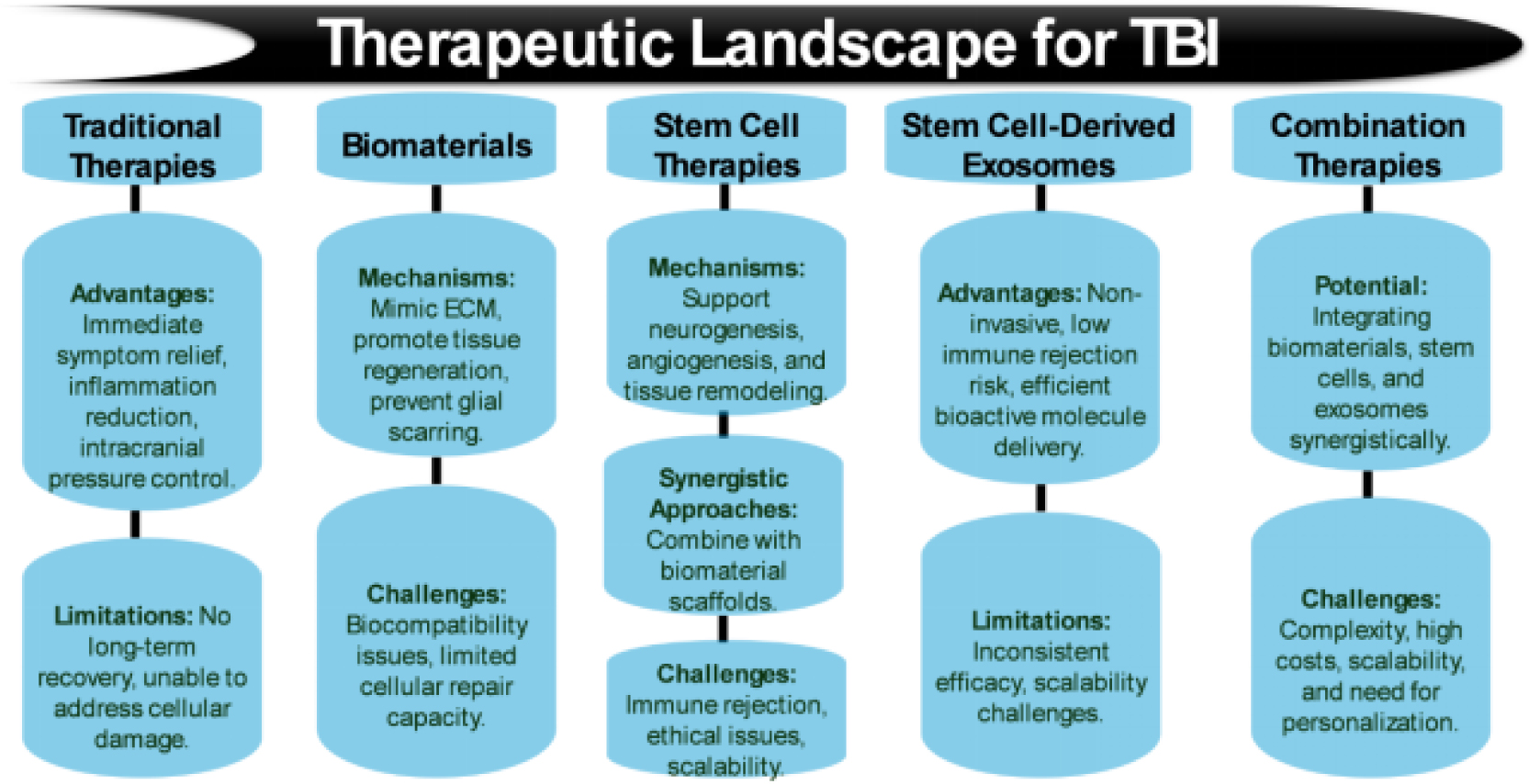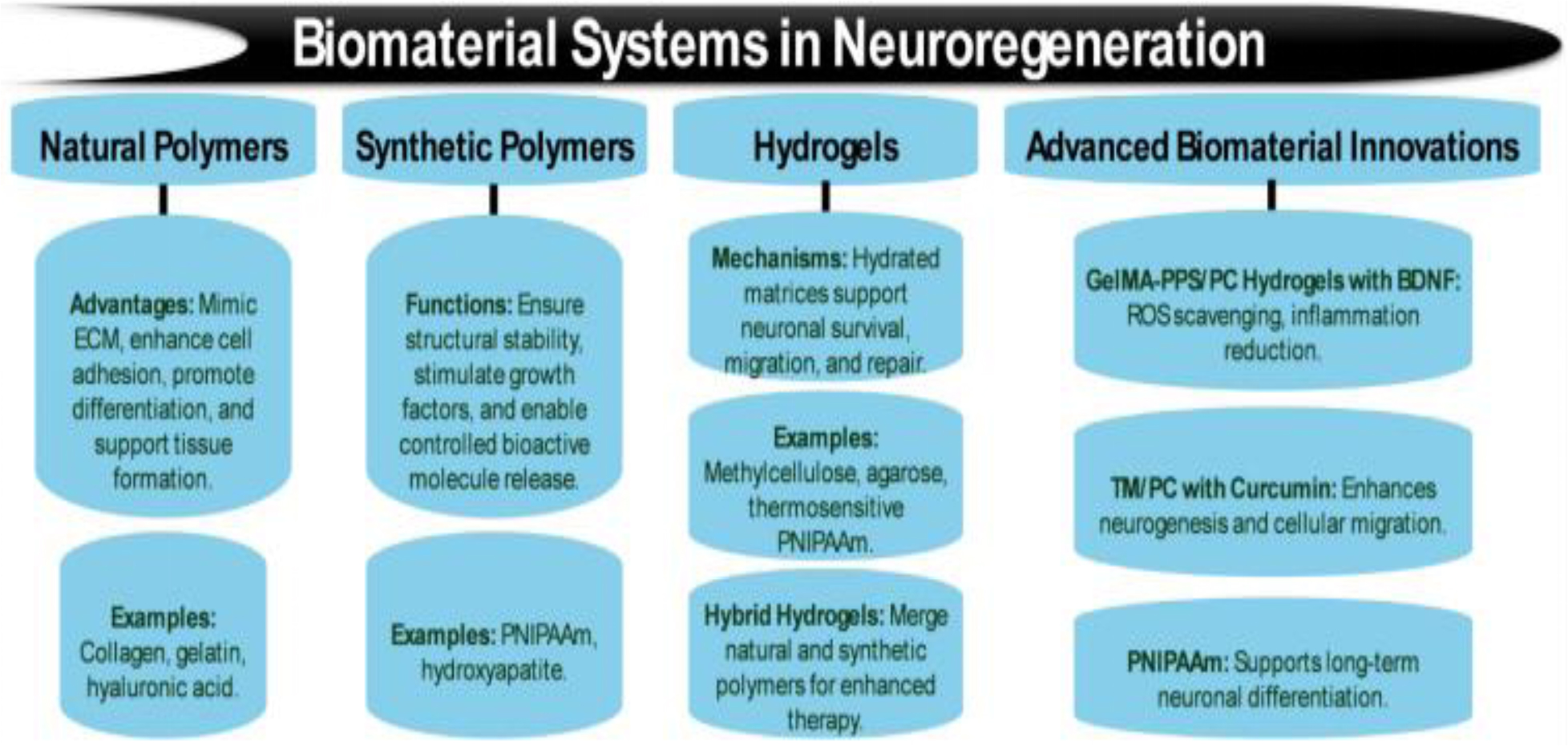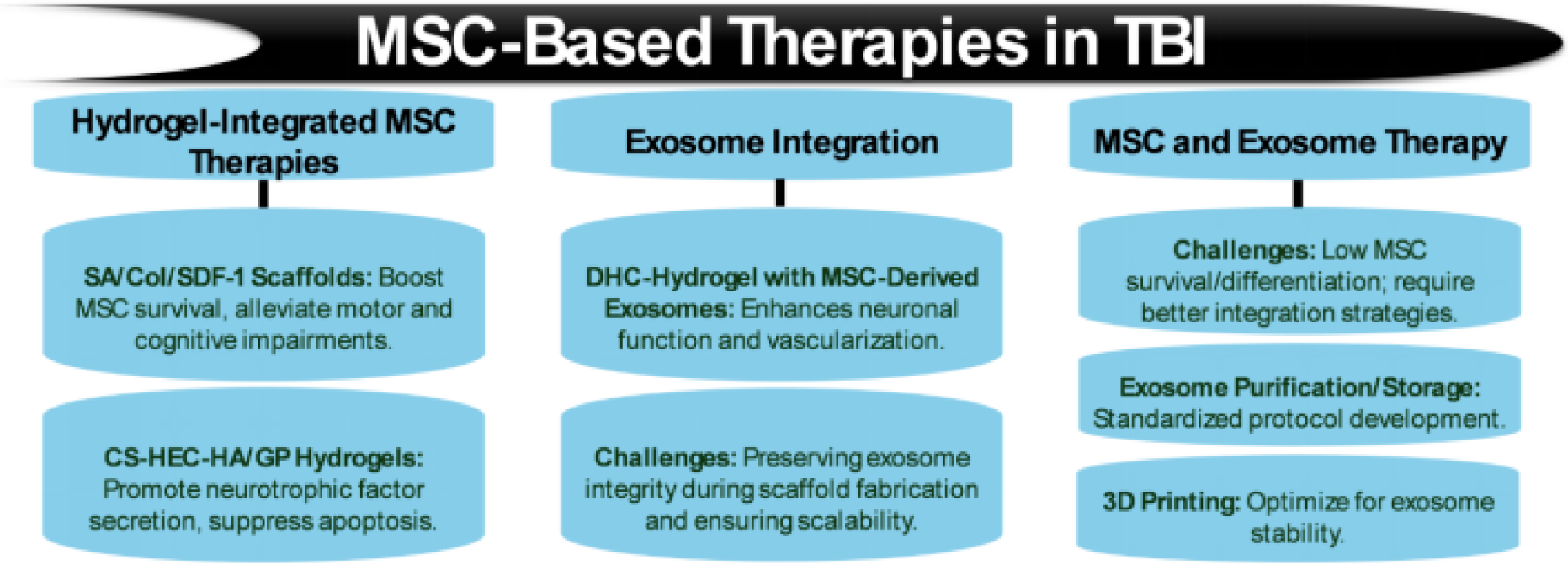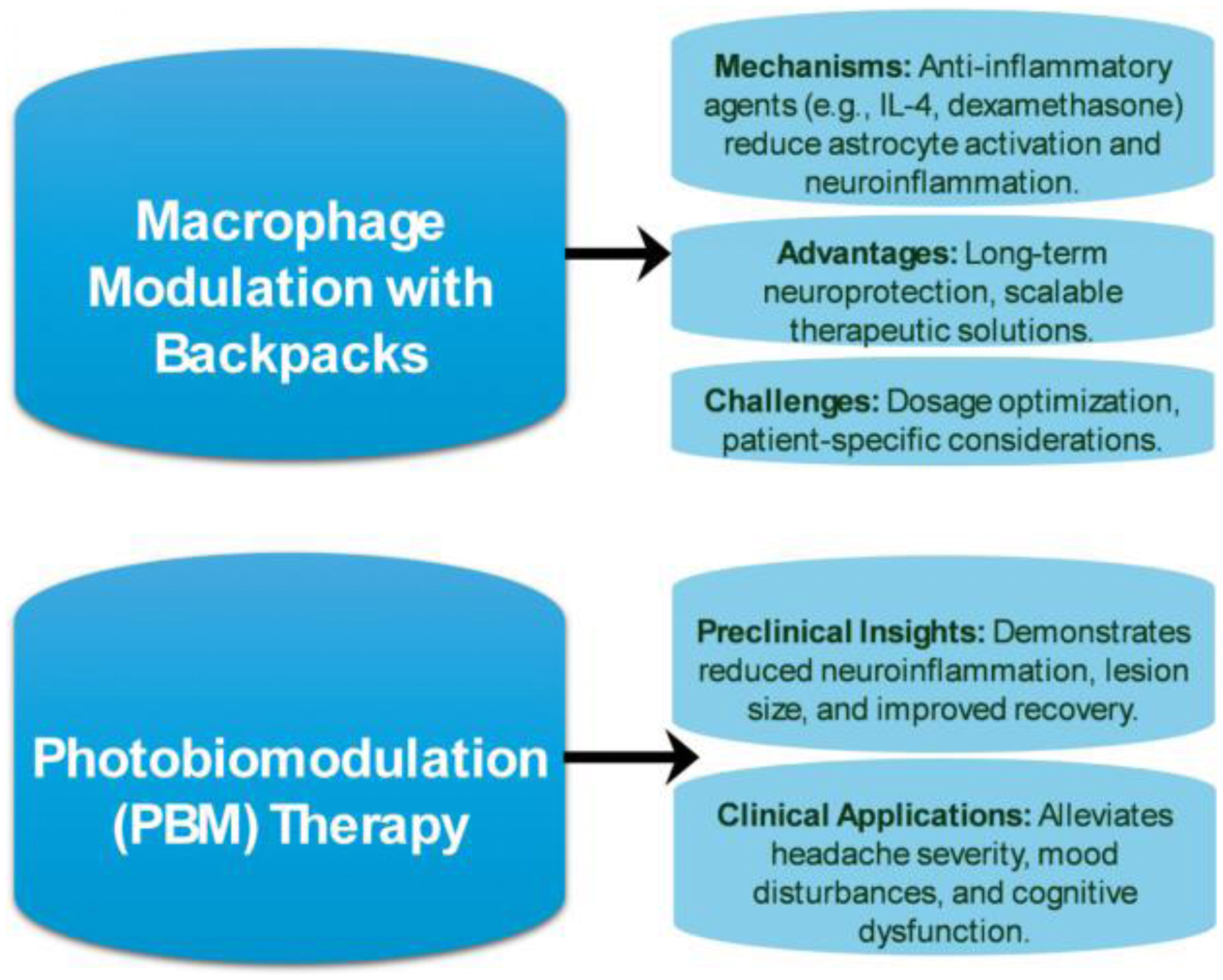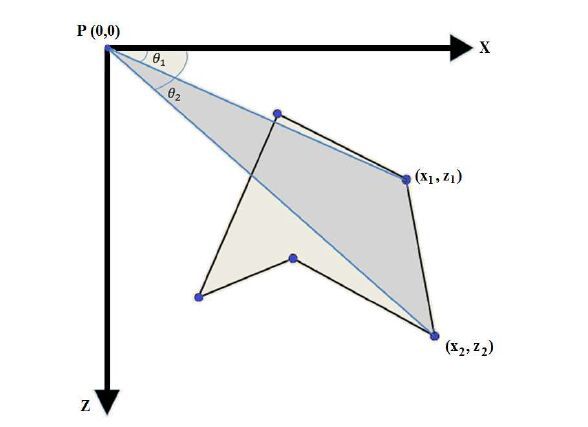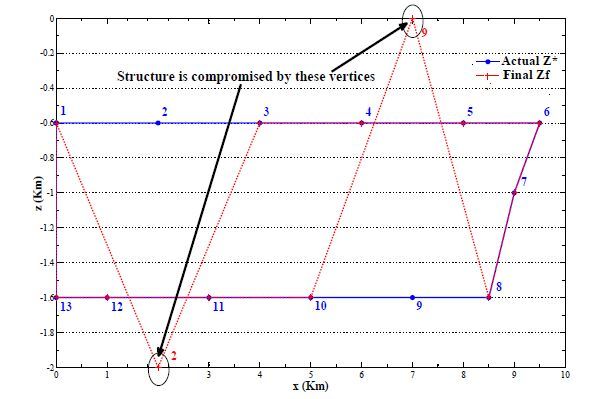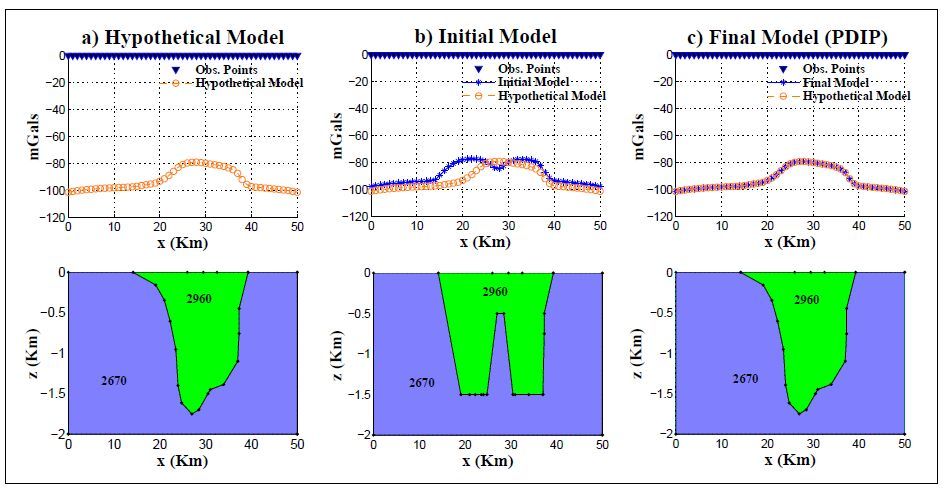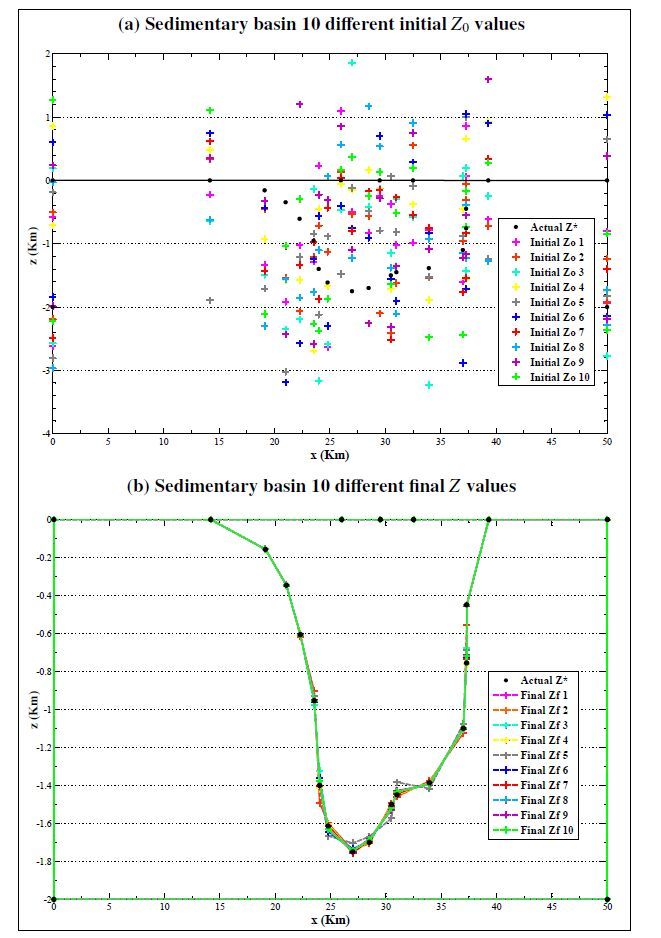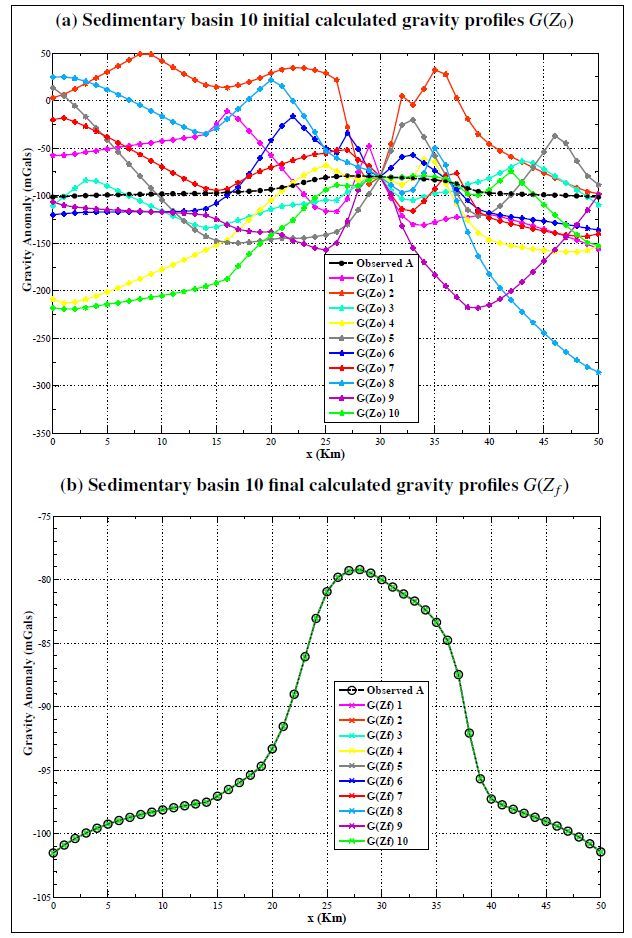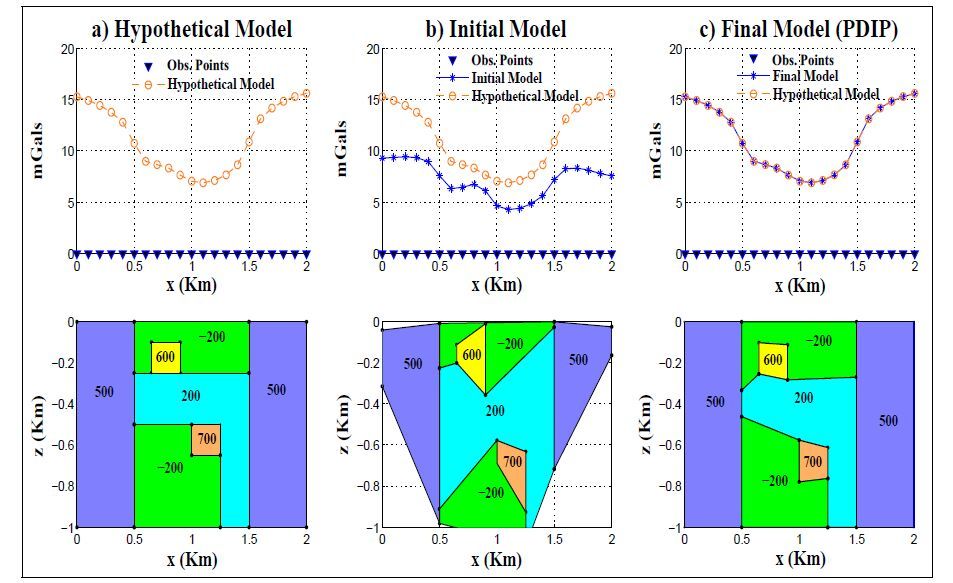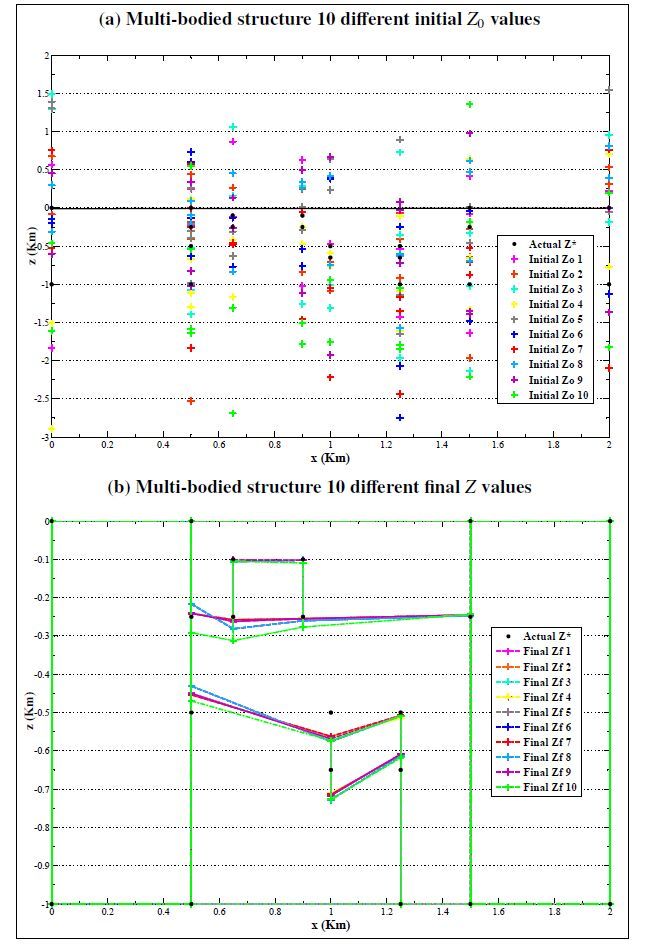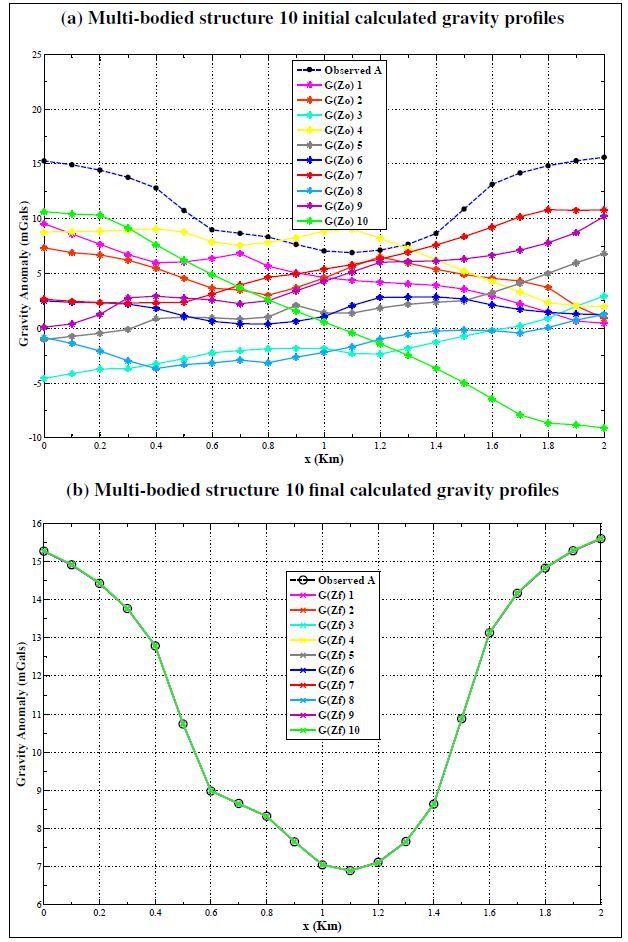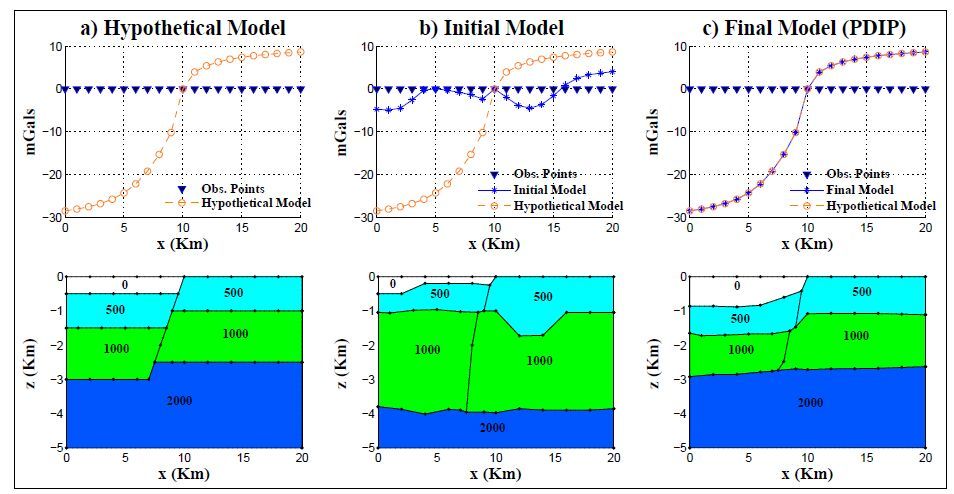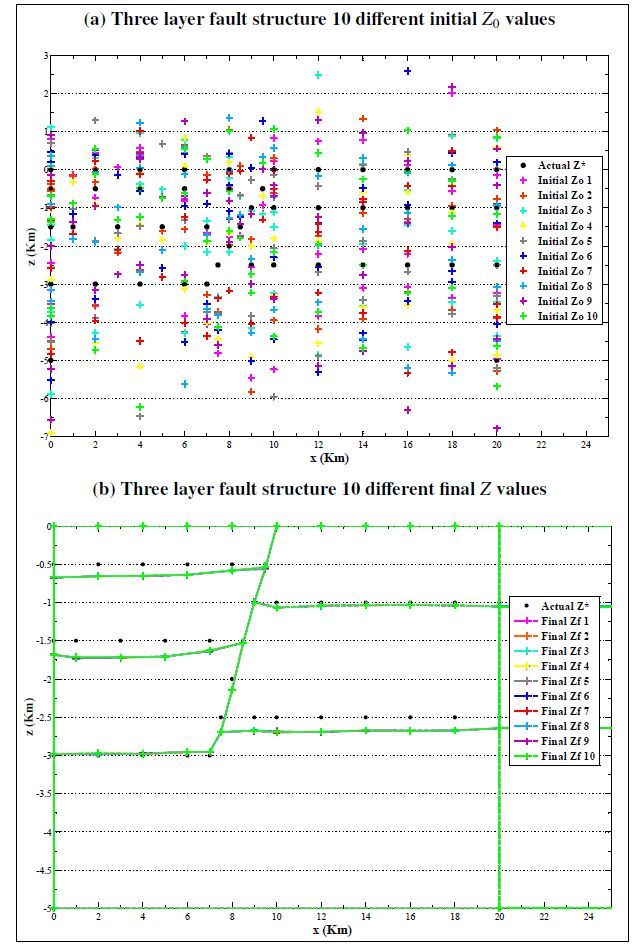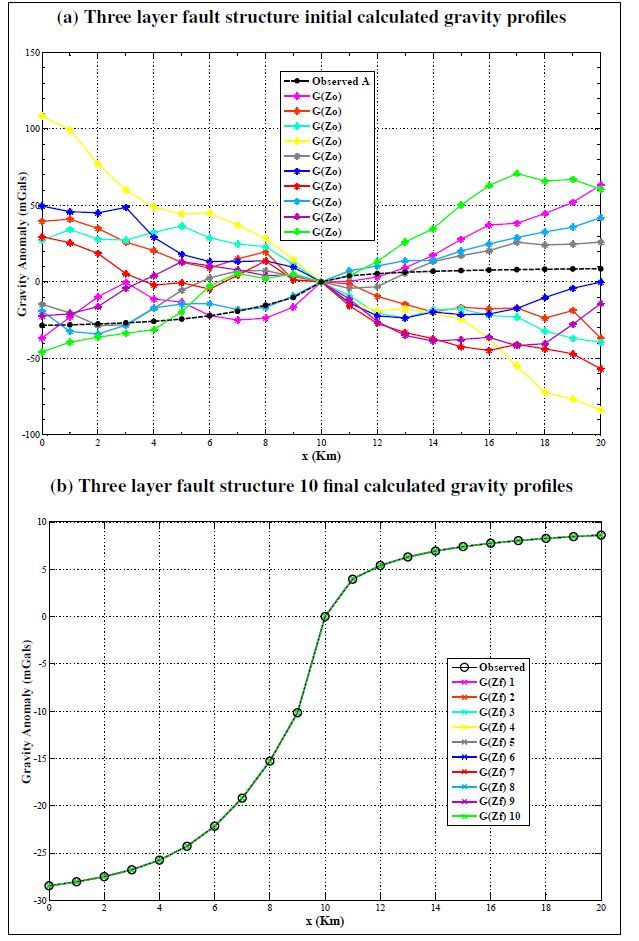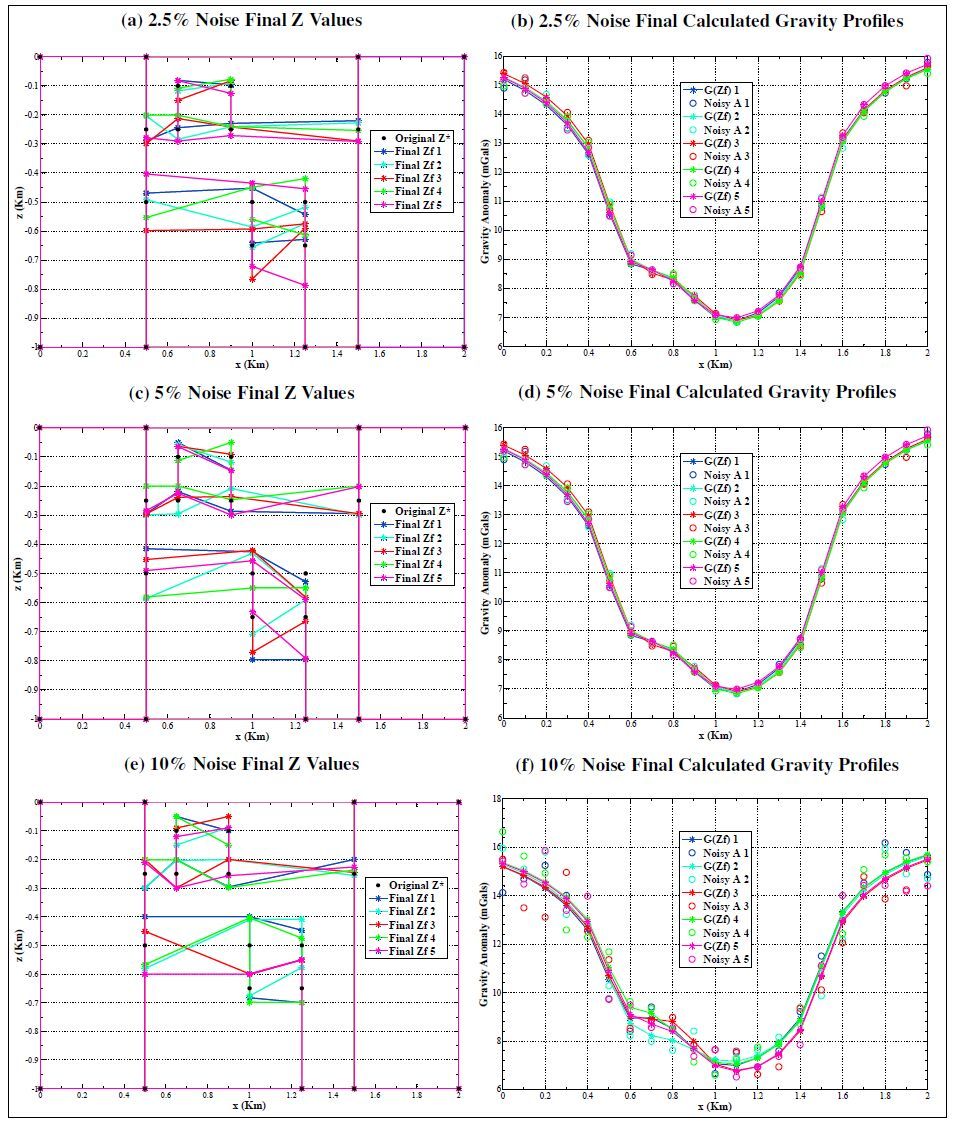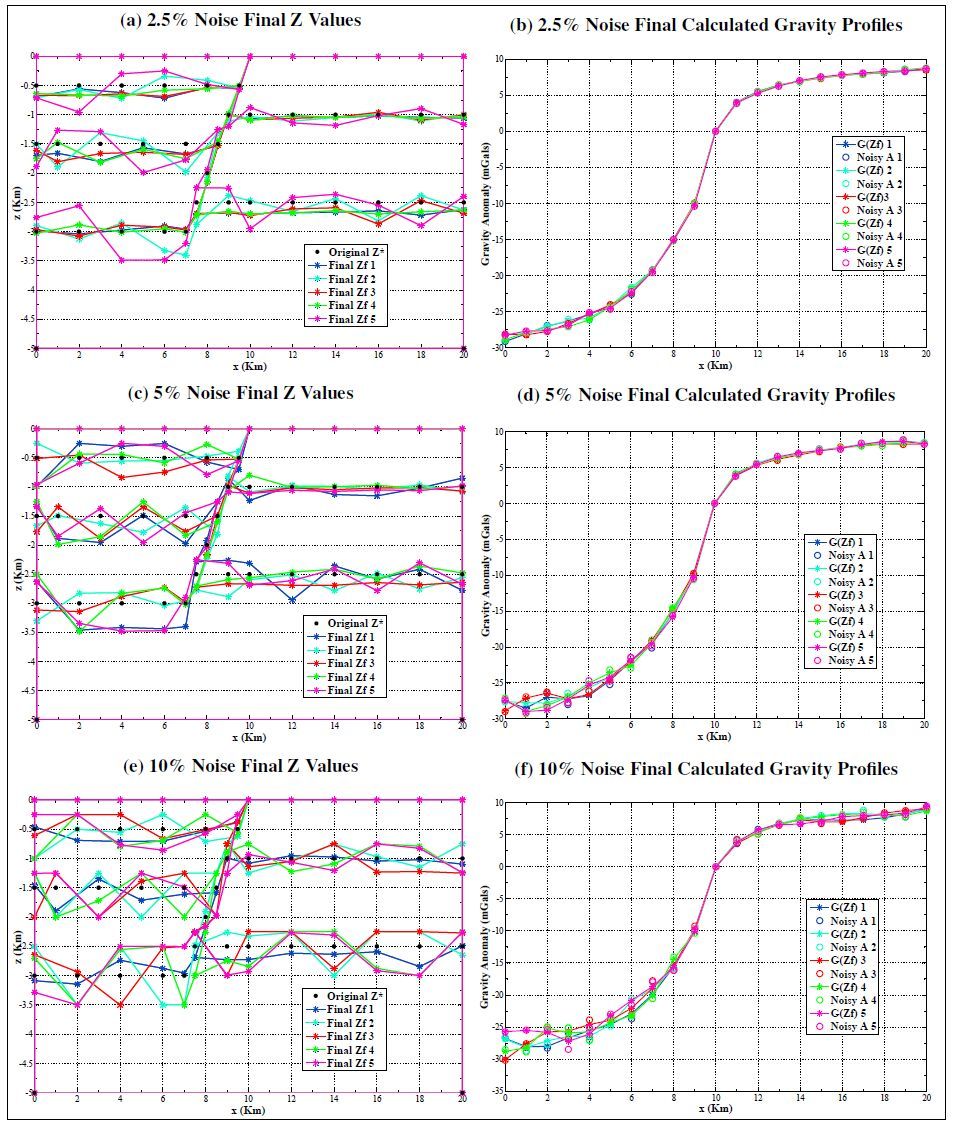Structural inversion of gravity datasets based on the use of density anomalies to derive robust images of the subsurface (delineating lithologies and their boundaries) constitutes a fundamental non-invasive tool for geological exploration. The use of experimental techniques in geophysics to estimate and interpret di erences in the substructure based on its density properties have proven e cient; however, the inherent non-uniqueness associated with most geophysical datasets make this the ideal scenario for the use of recently developed robust constrained optimization techniques. We present a constrained optimization approach for a least squares inversion problem aimed to characterize 2-Dimensional Earth density structure models based on Bouguer gravity anomalies. The proposed formulation is solved with a Primal-Dual Interior-Point method including equality and inequality physical and structural constraints. We validate our results using synthetic density crustal structure models with varying complexity and illustrate the behavior of the algorithm using di erent initial density structure models and increasing noise levels in the observations. Based on these implementations, we conclude that the algorithm using Primal-Dual Interior-Point methods is robust, and its results always honor the geophysical constraints. Some of the advantages of using this approach for structural inversion of gravity data are the incorporation of a priori information related to the model parameters (coming from actual physical properties of the subsurface) and the reduction of the solution space contingent on these boundary conditions.
1.
Introduction
1.1. Traumatic brain injury (TBI): a multifaceted public health challenge requiring urgent therapeutic advances
Traumatic brain injury (TBI) is a major public health issue, affecting nearly 3 million individuals annually in the United States alone and leading to approximately 55,000 fatalities each year [1],[2],[3]. Caused by external mechanical forces such as falls, motor vehicle accidents, sports-related injuries, or violence, TBI disrupts normal brain function and results in a broad range of consequences, from physical disabilities to cognitive and emotional impairments [4],[5]. These consequences significantly reduce an individual's quality of life and, beyond personal impact, impose a substantial societal burden in terms of long-term healthcare costs, loss of productivity, and the need for rehabilitative care.
The severity of TBI ranges from mild (mTBI) to moderate and severe, with even mild injuries often resulting in persistent symptoms [6]. Research has shown that over half of individuals with mild TBI experience long-lasting effects, including headaches, cognitive dysfunction, mood disturbances, and balance issues that can persist for months or longer [1],[7],[8]. Despite established clinical guidelines for acute management, current treatments are insufficient in preventing secondary brain injury or neuronal loss, underscoring the urgent need for novel therapeutic interventions.
Neuroinflammation, a hallmark of TBI, plays a complex role in the injury's progression, both contributing to recovery and exacerbating secondary brain damage. This dual nature of neuroinflammation highlights the need for innovative strategies to modulate the inflammatory response, enhance recovery, and mitigate the long-term consequences of TBI [9],[10]. The physical impacts of TBI can be debilitating, leading to paralysis, impaired motor coordination, chronic headaches, and sensory loss, all of which hinder an individual's ability to perform basic tasks and maintain independence. Additionally, TBI often affects cognitive functions such as memory, attention, decision-making, and problem-solving, making it difficult for individuals to adapt to new situations or retain learned information [11],[12]. Psychologically, patients may experience depression, anxiety, aggression, and mood swings, further complicating their recovery and social integration.
Given the complex and multifaceted nature of TBI, there is an urgent need for comprehensive treatments that address its underlying mechanisms. The current lack of effective therapies highlights the necessity of continued research and the development of innovative treatments to improve patient outcomes and reduce the far-reaching impact of TBI on individuals and society.
1.2. Pathophysiology of TBI: primary and secondary mechanisms of neural damage and recovery
The pathophysiology of TBI involves a complex sequence of biochemical and cellular events that are triggered immediately after the traumatic insult. These processes include mechanical disruption of brain tissue, excitotoxicity, mitochondrial dysfunction, oxidative stress, inflammation, and programmed cell death [13],[14]. Both primary and secondary injury mechanisms are central to the development of brain dysfunction and neurological impairment following TBI [15]. While the primary injury is caused by direct mechanical damage to brain structures, secondary injury mechanisms exacerbate the initial damage, contributing to prolonged neurological deficits [4]. Understanding the interplay between these mechanisms is crucial for developing effective therapeutic strategies.
Primary injury occurs immediately upon trauma, causing direct mechanical damage to brain structures such as axons, blood vessels, and neurons, leading to contusions, hemorrhages, and axonal shearing. This damage compromises the integrity of the brain and results in the direct loss of neurons, glial cells, and vascular structures [14],[16]. The immediate impairment of brain function that follows is generally irreversible, contributing significantly to the neurological deficits observed in patients. Primary injury sets the stage for the development of secondary injury processes that can amplify the damage.
Secondary injury mechanisms unfold over hours to days after the initial trauma and involve a range of processes that further exacerbate brain damage. These include inflammation, oxidative stress, mitochondrial dysfunction, and disruption of neuronal networks [17],[18]. Inflammation, triggered by the activation of microglia and astrocytes, leads to the release of pro-inflammatory cytokines, which exacerbate neuronal injury. Mitochondrial dysfunction and the overproduction of reactive oxygen species (ROS) impair cellular energy metabolism, further promoting oxidative damage [19],[20]. The breakdown of neuronal networks and loss of synaptic connections result in widespread neuronal death and tissue loss, contributing to cognitive and functional impairments that persist long after the initial trauma.
One key component of secondary injury is the disruption of homeostasis, where biochemical and metabolic alterations further compromise neuronal function. Neuroinflammation, driven by the activation of microglia and astrocytes, amplifies tissue damage and contributes to prolonged impairment [21],[22]. Reactive astrocytes form glial scars, which act as barriers to neural regeneration and axonal regrowth. Additionally, neurodegeneration, driven by chronic oxidative stress, excitotoxicity, and macrophage infiltration [23],[24],[25], results in neuronal death and ongoing functional deficits.
Astrocytes play a dual role in TBI recovery. On one hand, they maintain blood–brain barrier integrity, regulate cerebral blood flow, and offer neuroprotective effects. On the other hand, their activation in response to injury can disrupt the blood–brain barrier, induce chronic inflammation, and promote apoptotic pathways, thus exacerbating neuronal injury [26],[27],[28]. Understanding these mechanisms is crucial for developing targeted therapies that can mitigate the secondary consequences of TBI and promote neural repair.
Neuroinflammation plays a pivotal dual role in the progression of TBI, transitioning from acute responses to chronic states (Table 1). In the acute phase, neuroinflammation is characterized by the rapid activation of microglia and astrocytes, which release pro-inflammatory cytokines and chemokines. These responses primarily aim to mitigate further injury and promote brain protection [9],[29]. However, if inflammation becomes prolonged or dysregulated, it can transition into a chronic state, marked by sustained activation of immune cells and the production of neurotoxic mediators, which exacerbate secondary brain injuries and impede recovery [9],[30],[31].
Understanding the distinct phases of neuroinflammation requires highlighting the cellular mechanisms, key molecular mediators, and their roles in neuroprotection and neurodegeneration. These insights emphasize the importance of therapeutic approaches aimed at modulating neuroinflammation to achieve a balance between its protective and detrimental effects. By targeting specific pathways involved in cellular activation and chronic inflammation, innovative strategies can be developed to improve recovery outcomes and reduce long-term complications in TBI patients.
This article discusses emerging therapeutic strategies for TBI, focusing on stem cell–based therapies, biomaterials, and exosome-based treatments, which show promise in modulating inflammation, promoting tissue repair, and enhancing neurological function. Additionally, the article examines the integration of regenerative approaches, such as stem cells and exosomes, with advanced biomaterials, which may offer synergistic effects to optimize neural repair and functional recovery. Furthermore, the article explores novel materials, such as carbogenic nanozymes, and innovations in tissue engineering, including hydrogels and nanocarriers, that have the potential to mitigate oxidative stress, preserve blood–brain barrier integrity, and modulate neuroinflammation, thereby improving outcomes for TBI patients. Moreover, the article highlights the emerging potential of backpack–macrophage therapy and photobiomodulation (PBM) in addressing chronic TBI complications, such as post-traumatic epilepsy and cognitive impairments.
1.3. Emerging therapeutic strategies for TBI: advancements in stem cell therapy, biomaterials, and exosome-based treatments
Current treatments for TBI primarily focus on stabilizing the patient and preventing secondary damage. Traditional interventions, such as anti-inflammatory drugs, neuroprotective agents, anticoagulants, and surgical procedures like decompressive craniectomy and hematoma evacuation [42],[43], are critical for managing the immediate consequences of TBI and preventing further complications. However, these treatments fail to address the underlying processes of neural degeneration and do not promote long-term recovery of brain function. While they are essential for immediate care and stabilization, traditional therapies often fall short in facilitating neural recovery and tissue regeneration, highlighting the need for emerging therapeutic strategies with the potential to improve long-term outcomes (Figure 1).
Effective therapeutic strategies for TBI require precise modulation of the inflammatory response while avoiding broad suppression of immune function. Emerging approaches, including stem cell therapy, immune cell therapy, and exosome-based treatments, show promise in achieving this balance. Stem cells have been shown to migrate to injury sites, modulate inflammation, and promote tissue repair. Ongoing investigations are exploring various autologous and allogeneic sources of stem cells, such as bone marrow–derived, adipose-derived, and umbilical cord–derived stem cells [44],[45]. Targeted modulation of immune cells, particularly macrophages, holds promise for regulating inflammation [46]. Therapies involving regulatory T cells and macrophages aim to shift the inflammatory response toward resolution and repair [47]. Additionally, mesenchymal stem cell (MSC)-derived exosomes deliver therapeutic factors that attenuate inflammation without the risks associated with whole-cell therapies [48]. Preclinical studies in models, such as swine, have demonstrated their effectiveness in reducing lesion size and promoting functional recovery [49]. These strategies represent promising avenues for more targeted and effective TBI treatments, which are discussed further in this article.
Emerging therapies, particularly those in tissue engineering (TE) and regenerative medicine, offer promising prospects for TBI treatment [50]. Biomaterials are being developed to mimic the brain's extracellular matrix (ECM), providing scaffolds that promote tissue repair and regeneration. These biomaterials can help reduce inhibitory signals from glial scars, creating an environment conducive to axonal regrowth and neural repair [51],[52]. Furthermore, biocompatible scaffolds can be loaded with stem cells to enhance neurogenesis, angiogenesis, and tissue remodeling, further facilitating recovery [53],[54],[55]. Strategies such as biomaterials, stem cell therapies, and exosome-based treatments show significant potential for enhancing neural repair and functional recovery by supporting tissue regeneration and delivering molecular signals that promote healing (Table 2). Despite their promise, these approaches face challenges such as immune rejection, scalability limitations, and the lack of standardized clinical protocols.
Stem cell–derived exosomes, which are nano-sized vesicles secreted by stem cells, have also emerged as a key tool in regenerative medicine. These exosomes carry bioactive molecules, such as growth factors, genetic material, and RNA, which can directly promote tissue regeneration [77],[78]. Exosomes are advantageous because they are less likely to induce immune rejection compared to whole stem cells, improving their biocompatibility. Additionally, exosomes have been shown to stimulate angiogenesis and neuronal regeneration, making them a valuable addition to TBI therapies [79],[80].
The combination of biomaterials and stem cell–derived exosomes holds significant promise for improving therapeutic outcomes in TBI by providing scaffolds for tissue repair and delivering bioactive molecules that promote regeneration [59],[70],[81]. This combination could enhance recovery and restore lost brain functions. Combination therapies, which integrate multiple treatment modalities, offer a promising avenue for improving outcomes by addressing the multifaceted nature of TBI recovery. However, these synergistic approaches introduce complexities, such as increased costs and logistical challenges. Developing innovative solutions and conducting rigorous preclinical testing are critical for optimizing these strategies for clinical implementation.
The integration of biomaterials, stem cells, and exosomes is transforming TBI management. Research advances suggest the development of personalized therapies, where biomaterials and stem cell formulations are tailored to meet the specific needs of individual patients, improving therapeutic efficacy and outcomes. Innovations in nanotechnology and bioengineering are expected to enhance the functionality, biodegradability, and integration of biomaterials, facilitating more effective tissue repair.
A deeper understanding of the molecular pathways involved in TBI will also enable the development of more targeted interventions. By identifying the key drivers of neurodegeneration and inflammation, researchers can design therapies that specifically target these mechanisms, mitigating injury and promoting recovery.
Despite these promising advances, challenges such as scalability, affordability, and ethical concerns remain. Addressing these issues is essential for ensuring the widespread clinical adoption of these strategies. Nonetheless, the potential for improved outcomes justifies continued investment in TBI research, as it holds the promise of transforming treatment and care for patients.
2.
Main body
2.1. Advancements in tissue engineering and regenerative medicine for CNS injury repair: beyond symptom management toward functional recovery
Traditional treatments for central nervous system (CNS) injuries, such as surgical interventions and pharmacological management, primarily focus on symptom control and provide limited regenerative potential (Table 2). These approaches are crucial for immediate care but often fail to promote long-term recovery or functional restoration. In contrast, recent advancements in tissue engineering (TE) and regenerative medicine offer more comprehensive therapeutic options. By combining stem cells with biomaterial scaffolds, researchers can promote the proliferation and differentiation of neural cells, which facilitates the regeneration of damaged tissue [82]. The incorporation of growth factors further enhances tissue repair by reducing glial scar formation and creating an environment conducive to functional recovery [83]. Additionally, the development of biomimetic microenvironments, designed to replicate the biochemical and mechanical properties of native CNS tissue, offers further support for neural regeneration and the restoration of normal brain function [84].
The integration of TE and regenerative medicine has marked a significant shift in the treatment of CNS injuries, moving beyond symptom management toward promoting long-term recovery and functional restoration at both the cellular and tissue levels. Traditional therapies for CNS injuries have been limited by their focus on symptom relief and their inability to induce significant repair or regeneration. However, the advent of tissue engineering provides innovative solutions for complex CNS injuries and disorders by promoting functional recovery and facilitating cellular repair [85],[86]. This interdisciplinary approach, which combines biomaterials, scaffolds, therapeutic compounds, and cells, is enabling the development of advanced strategies aimed at neural regeneration and repair.
One of the key innovations in CNS repair is the use of engineered hydrogels. These hydrogels serve as carriers for cells and therapeutic molecules while mimicking the biochemical and mechanical properties of native CNS tissue [87],[88]. By creating a biocompatible environment, hydrogels support localized repair and enhance the delivery of growth factors and neural stem cells (NSCs) to injury sites—both of which are critical for tissue regeneration [89],[90]. In addition, hydrogels promote cellular integration and differentiation, further facilitating the healing process. Another significant advancement in tissue engineering is the development of nanocarriers, such as lipoprotein-biomimetic systems, which transport therapeutic agents, like cyclosporine A, directly to CNS injury sites [91]. These nanocarriers have shown the ability to reduce mitochondrial dysfunction, alleviate neural inflammation, and restore cognitive function, offering a more targeted and controlled therapeutic approach than traditional pharmacological treatments [92],[93].
Despite these promising advances in preclinical studies, several challenges remain in translating these technologies into clinical settings. The primary obstacle is the complex healing process of the CNS, which is not yet fully understood at the molecular and cellular levels. This lack of understanding complicates the design of effective therapeutic strategies. Moreover, the blood–brain barrier (BBB), a highly selective barrier that protects the CNS, limits the delivery of many therapeutic agents to the brain and spinal cord [94]. While innovative drug delivery systems are being developed to overcome this challenge, the BBB continues to pose a significant hurdle in achieving successful clinical outcomes. Additionally, differences between human and animal CNS structures often result in discrepancies between preclinical animal studies and human clinical trials [95],[96], limiting the effective translation of therapies.
The integration of pharmacological, surgical, cell-based, and biomaterial-based therapies represents a holistic approach to addressing the multifaceted challenges posed by CNS injuries. Each modality offers distinct advantages but also presents unique challenges. Biomaterials, particularly engineered hydrogels and nanocarriers, show the greatest promise for advancing CNS injury repair by supporting tissue regeneration and improving the targeted delivery of therapeutic agents [97]. However, the successful clinical application of these technologies will require overcoming significant obstacles, including the complexities of CNS healing and the constraints imposed by the BBB.
Ongoing advancements in biomaterials and regenerative technologies are essential for overcoming these challenges. By refining these approaches and ensuring their successful translation into clinical practice, researchers can pave the way for highly effective, minimally invasive treatments. These therapies have the potential not only to improve the quality of life for patients with CNS injuries but also to transform the field of neuroregeneration. With continued progress, there is the possibility of achieving long-term, functional recovery for individuals suffering from TBI, spinal cord injury, and other CNS disorders. This article will discuss in greater detail several biomaterials and regenerative technologies, highlighting their current progress and future potential.
2.2. Harnessing biomaterials and nanozymes: revolutionary strategies for combatting oxidative stress and promoting neuroprotection in CNS disorders
2.2.1. Oxidative stress and neuroinflammation: key drivers of neuronal damage and targets for therapeutic intervention in TBI
TBI triggers a cascade of pathological events that significantly disrupt normal brain function. One of the most critical mechanisms in the secondary damage following TBI is the increase in ROS and reactive nitrogen species (RNS). These reactive molecules are byproducts of cellular metabolism and immune responses, and their overproduction exacerbates oxidative stress in the CNS [98],[99]. The resulting oxidative damage accelerates neuronal injury, impairs cellular functions, and contributes to the development of neuroinflammation.
The excessive production of ROS and RNS following TBI leads to cellular damage by interacting with lipids, proteins, and DNA. This oxidative damage disrupts cellular membranes, impairs mitochondrial function, and induces neuronal apoptosis, all of which contribute to the progression of injury [100],[101]. Additionally, ROS and RNS promote the activation of inflammatory pathways, which leads to the infiltration of immune cells, such as neutrophils and microglia, into the injured tissue [102],[103]. These inflammatory cells further amplify oxidative stress through the release of pro-inflammatory cytokines and additional reactive species, creating a vicious cycle of damage that hinders neuronal function and recovery [104].
Beyond causing acute damage, oxidative stress also inhibits the brain's ability to regenerate after injury. The activation of astrocytes and microglia at the injury site is a critical response to TBI, but it can also result in the formation of a glial scar [24],[37]. This scar impedes neuronal regrowth by acting as a physical barrier and secreting inhibitory molecules. Moreover, reactive oxidative species produced by glial cells suppress regenerative processes, limiting neuronal plasticity and hindering recovery [105],[106].
Given the central role of oxidative stress in TBI pathology, targeting ROS and RNS has emerged as a promising therapeutic strategy. Antioxidants, such as N-acetylcysteine, vitamin E, and glutathione, can neutralize reactive species, reduce cellular damage, and enhance neuronal survival [107],[108]. In addition to antioxidant therapies, approaches that modulate the inflammatory response, such as inhibiting microglial activation or cytokine production, could help reduce oxidative stress and improve the conditions for neuronal repair [109].
Overall, oxidative stress plays a crucial role in amplifying neuronal damage and inhibiting regeneration following TBI. Strategies aimed at reducing ROS and RNS levels, coupled with anti-inflammatory interventions, are essential for improving recovery and promoting long-term functional recovery in patients with TBI.
2.2.2. Biomaterial innovations for overcoming the blood–brain barrier: advancing targeted delivery and neuroprotection in CNS disorders
The CNS is highly susceptible to a variety of pathological conditions, including neurodegenerative diseases, TBI, and strokes. A major barrier to effective therapeutic intervention for these conditions is the BBB, a selective permeability mechanism that restricts the entry of most therapeutic agents into the brain [110]. This limitation has significantly hindered the development of effective treatments for CNS-related diseases. Traditional drug treatments often fail to reach therapeutic concentrations within the brain, making it difficult to target the underlying causes of neurodegeneration, inflammation, and neuronal injury [111],[112].
However, recent advances in biomaterials have opened new avenues for overcoming the BBB and improving drug delivery to the CNS (Table 3). Biomaterials, including hydrogels, nanoparticles, and polymeric systems, have been engineered to facilitate the transport of therapeutic agents across the BBB (Figure 2). These innovations not only enable efficient drug delivery but also enhance neuroprotection by promoting neuronal survival, reducing inflammation, and supporting neuronal regeneration [113],[114]. In addition to their drug delivery capabilities, these biomaterial systems often incorporate mechanisms that directly address the pathological processes in the CNS, such as oxidative stress, excitotoxicity, and immune responses [115],[116].
The application of biomaterials for targeted delivery and neuroprotection has led to the development of several promising systems that are revolutionizing the treatment of CNS disorders. These systems are designed to improve therapeutic outcomes by providing localized delivery of bioactive compounds, minimizing systemic side effects, and enhancing the regenerative potential of damaged tissues. Table 3 summarizes some of the leading biomaterial systems that have been developed for targeted delivery and neuroprotection in the CNS.
These biomaterials, such as GelMA-PPS/PC hydrogels, release neurotrophic factors like BDNF directly at the injury site, scavenging ROS and reducing pro-inflammatory cytokines (e.g., Iba-1, GFAP, interleukins) to promote neuroprotection and neuronal survival [81],[120],[125]. The TM/PC system combines ROS-scavenging agents with curcumin, promoting neurogenesis and upregulating neurogenesis markers such as doublecortin (DCX) [126],[127].
Advancements in biomaterials have enabled the development of innovative drug delivery systems that overcome the BBB and offer targeted, sustained release of therapeutic agents in the CNS. The biomaterial systems discussed in this section represent a significant leap forward in the treatment of CNS disorders, including neurodegenerative diseases and brain injuries. These systems not only enhance the delivery of therapeutic agents but also address the underlying pathological processes such as oxidative stress, inflammation, and impaired neuronal regeneration. By harnessing the unique properties of biomaterials, these delivery systems hold immense promise for improving outcomes in patients with CNS disorders, paving the way for more effective and personalized treatments in the future.
2.2.3. Carbogenic nanozymes: a revolutionary approach to combating oxidative stress and promoting CNS regeneration
Carbogenic nanozymes have emerged as a novel and promising approach for managing oxidative stress, particularly in the context of CNS regeneration. These nanomaterials possess enzyme-like properties, enabling them to mimic the activity of natural antioxidants, such as superoxide dismutase (SOD) and catalase [128],[129]. This ability allows nanozymes to effectively scavenge ROS and RNS, thereby mitigating oxidative damage and neuronal degeneration, two key contributors to the progression of neurodegenerative diseases and CNS injury [130],[131],[132].
One of the most significant benefits of nanozyme technology is its ability to reduce matrix metalloproteinases (MMPs), which are involved in the disruption of the BBB and the development of cerebral edema following TBI. MMPs play a pivotal role in the degradation of the extracellular matrix, leading to BBB permeability and subsequent neuroinflammation [133],[134],[135]. By inhibiting MMP activity, nanozymes help maintain the integrity of the BBB, reducing cerebral edema and limiting neuronal damage after injury. This action not only protects the brain but also aids in the overall recovery process, ensuring that the brain's neurovascular environment is preserved during the regenerative phases.
Beyond their effects on BBB integrity, nanozymes are also capable of modulating inflammatory responses within the CNS. The activation of microglia and astrocytes—key players in neuroinflammation—is often exacerbated in neurodegenerative conditions and TBI. Nanozymes have been shown to limit the overactivation of these glial cells, which is crucial for reducing neuroinflammation, a significant driver of neuronal damage [136],[137],[138],[139]. This reduction in neuroinflammation promotes a more favorable environment for neuronal recovery and regeneration, facilitating improved outcomes after injury.
Moreover, nanozymes enhance the activity of superoxide dismutase (SOD), a key antioxidant enzyme that protects against oxidative stress by converting superoxide radicals into hydrogen peroxide, which is subsequently detoxified [138],[140],[141]. This enhancement of SOD activity provides a robust defense against oxidative damage, preventing lipid peroxidation—a critical process that can lead to neuronal death and tissue damage in the brain. By reducing lipid peroxidation and protecting cellular membranes from oxidative injury, nanozymes contribute to the preservation of neuronal function and integrity.
Carbon-based nanomaterials, such as carbon dots (CDs), offer an additional layer of therapeutic potential due to their unique properties. CDs have a high surface area, biocompatibility, and the ability to efficiently load and release therapeutic agents [141]. These features make CDs particularly suitable for targeted drug delivery across the BBB, a significant barrier in CNS treatment [142],[143]. By utilizing CDs for the delivery of neuroprotective drugs or antioxidants directly to the brain, therapeutic outcomes for neurodegenerative diseases, traumatic injuries, and other CNS disorders can be significantly improved.
Nanozyme technology represents a cutting-edge strategy for addressing oxidative stress, neuroinflammation, and BBB disruption in CNS disorders. Through their enzyme-mimetic properties, these nanozymes offer an innovative means of protecting the brain from oxidative damage, supporting neuroprotection, and promoting regeneration. The application of carbogenic nanozymes holds great promise for advancing therapeutic strategies in the treatment of neurodegenerative diseases and CNS injuries, offering hope for more effective and targeted interventions in the future [144]. However, their long-term biocompatibility and potential off-target effects remain significant challenges that require further investigation. Additionally, scaling up the production of nanozymes while maintaining their stability and functionality poses a critical hurdle for their widespread clinical application.
2.3. Enhancing CNS regeneration: the role of biomaterials in advancing stem cell therapies
Stem cell therapies have emerged as a promising strategy for CNS regeneration, particularly for treating neurodegenerative diseases and traumatic brain injuries (Table 4). However, several challenges remain in translating stem cell therapies into clinical practice, including poor cell retention, low viability, and limited differentiation into the required neuronal phenotypes [145],[146],[147]. These obstacles can hinder the therapeutic potential of stem cells. Biomaterials, however, have shown great promise in addressing these challenges [82]. By providing structural support, optimizing the cellular microenvironment, and promoting cell survival, biomaterials can enhance stem cell viability, differentiation, and integration into the surrounding tissue, thus facilitating effective neural regeneration [54],[55].
Natural and synthetic biomaterials are commonly used in stem cell–based therapies due to their biodegradability and ability to mimic the ECM, which is critical for promoting cellular interactions and tissue formation. Natural polymers, such as collagen, gelatin, silk fibroin, chitosan, and hyaluronic acid (HA), are particularly beneficial because they are inherently biocompatible and can closely replicate the ECM architecture [159]. These materials facilitate cell adhesion, promote neuronal growth, and encourage tissue regeneration, making them ideal candidates for use in neural tissue engineering [160],[161].
Hydrogels, including composites like methylcellulose/agarose, provide a highly favorable environment for neuronal survival and differentiation. Hydrogels can absorb large amounts of water, which creates a hydrated matrix that supports the growth and migration of neurons [87],[162]. They also provide a soft, flexible scaffold, which is essential for the delicate structure of the CNS. The use of hydrogels in combination with stem cells has demonstrated promising results, especially in the repair of spinal cord injuries and the regeneration of neuronal tissues in vitro [151],[163].
Thermosensitive hydrogels, such as poly(N-isopropylacrylamide) (PNIPAAm), offer further advantages for stem cell therapy. These materials are responsive to temperature changes, allowing them to transition between gel and sol phases. This property facilitates the controlled release of growth factors and other bioactive molecules that promote stem cell differentiation and survival [164],[165],[166]. Additionally, thermosensitive hydrogels can support long-term growth factor production, further enhancing the regenerative capacity of stem cells. This feature is particularly valuable for sustaining a prolonged effect on neuronal regeneration in the injured or degenerating CNS [151],[167].
However, despite their potential, hydrogels face several challenges in clinical applications. For example, many hydrogels suffer from instability under physiological conditions, which can affect their ability to maintain structural integrity and provide lasting support. Furthermore, chemically crosslinked hydrogels may exhibit cytotoxicity, which limits their effectiveness in promoting stem cell survival [162],[168],[169]. To address these issues, hybrid hydrogels—composed of both synthetic and natural polymers—have been developed. These hybrid materials combine the mechanical stability of synthetic polymers with the biological activity of natural polymers. As a result, hybrid hydrogels provide a balanced solution [157],[170],[171], offering both structural support and a biologically favorable environment for cell growth and differentiation, making them more suitable for CNS regeneration.
Biomaterials play a central role in advancing stem cell therapies for neural regeneration by addressing key challenges such as stem cell retention, viability, and differentiation. The integration of natural and synthetic polymers, hydrogels, and hybrid materials enhances the potential of stem cell–based therapies to treat a wide range of CNS injuries and neurodegenerative diseases [55],[172]. These biomaterials not only improve the mechanical and structural integrity of regenerating tissues but also promote critical cellular processes like adhesion, differentiation, and survival. This synergy between material properties and cellular behavior paves the way for more effective treatments and improved outcomes for patients suffering from CNS disorders, including spinal cord injuries and neurodegenerative diseases. As the development and refinement of these materials continue, they hold the promise of enabling successful, long-term neural regeneration in clinical settings, offering hope for patients facing debilitating CNS conditions.
2.4. Emerging and synergistic biomaterial-based therapeutic strategies for CNS regeneration: targeting oxidative stress, neuroinflammation, and neuroplasticity in TBI
The field of biomaterials for CNS regeneration is rapidly evolving, offering new avenues for addressing the complex challenges posed by TBI, neurodegenerative diseases, and other CNS-related disorders. Effective strategies for CNS regeneration must integrate key attributes such as biodegradability, stability, biocompatibility, and mechanical integrity to ensure that biomaterials not only support cellular function but also provide long-term therapeutic benefits. The synergy between biomaterials and therapeutic agents, such as ROS scavengers and stem cells, is at the forefront of novel treatment approaches that promise to significantly enhance neuronal survival, promote tissue repair, and improve functional recovery in patients suffering from CNS injuries and disorders [59],[81],[173].
Recent advancements in biomaterial-based therapies for CNS regeneration have shown considerable promise in mitigating the effects of oxidative stress, neuroinflammation, and neuronal degeneration. The combination of biomaterials with stem cell therapies or therapeutic agents offers an innovative approach to repair the damaged CNS and restore its functionality. By harnessing the potential of biomaterials to create supportive microenvironments for stem cells, enhance drug delivery, and modulate oxidative stress, these strategies pave the way for more effective treatments for conditions like TBI, Alzheimer's disease, and spinal cord injuries [32],[174],[175].
A critical focus in the ongoing development of these therapies is the regulation of oxidative stress, a common pathway in CNS injury and neurodegeneration. Biomaterials designed to scavenge ROS, promote antioxidant activities, and regulate mitochondrial function are key to reducing neuronal damage and enhancing tissue recovery [176],[177]. Additionally, the use of nanocomposites, bioactive materials, and advanced scaffolds in biomaterial-based strategies helps address the need for tissue regeneration and repair by supporting cell adhesion, migration, and differentiation in the damaged regions of the CNS [161],[178].
Recent research has made significant strides in developing therapeutic strategies that target critical processes such as neuroinflammation, oxidative stress, ferroptosis (iron-dependent cell death), and neuroplasticity (Figure 3). These strategies not only aim to reduce cellular damage but also promote neural repair and recovery, improving patient outcomes [179],[180]. The therapeutic potential of novel biomaterials, including bioactive hydrogels, multifunctional nanocomposites, and immune-modulatory nanoparticles, underscores their importance in advancing TBI treatment [87],[181]. Their ability to modulate inflammation, reduce oxidative stress, and enhance neuronal regeneration positions them as promising candidates for improving the prognosis of TBI patients.
Recent advancements in therapeutic strategies—including bioactive materials, nanocomposites, and advanced scaffolds—aim to reduce cellular damage, promote neural repair, and enhance recovery. Table 5 outlines the mechanisms of action for each strategy and highlights their potential benefits, offering promising avenues for improving patient outcomes in TBI treatment by reducing secondary brain injury and facilitating recovery.
The integration of biomaterials with therapeutic agents represents a promising and multifaceted approach to CNS regeneration. As research continues to advance, these strategies will likely become an essential part of clinical practice, offering new hope for patients with CNS injuries and neurodegenerative diseases. By further refining the properties of biomaterials and enhancing their therapeutic potential, researchers can develop more effective treatments that not only alleviate the immediate effects of CNS damage but also foster long-term recovery and functional restoration.
2.5. Mesenchymal stem cells (MSCs) for brain injury therapy: biomaterial strategies, exosome-based approaches, and clinical challenges
Mesenchymal stem cells (MSCs) have attracted considerable interest as a therapeutic option for brain injuries due to their unique regenerative properties. These multipotent cells possess the ability to differentiate into neuronal lineages, replace damaged cells, and secrete a variety of paracrine factors that contribute to tissue repair and regeneration (Table 6). MSCs can also modulate immune response, reduce inflammation, and promote tissue homeostasis, all of which are crucial in the context of brain injury. Despite their promising potential, several significant challenges impede their widespread clinical application. These challenges include limited cell availability, the short lifespan of the transplanted cells, restricted neuronal differentiation capacity, and poor integration with host tissue. Addressing these issues is essential for optimizing MSC-based therapies for brain injury repair and improving clinical outcomes for patients suffering from traumatic brain injuries (TBI) or other neurodegenerative conditions.
2.5.1. Biomaterial strategies to enhance MSC-based therapies for brain injury: advances and challenges
To overcome the limitations of MSC-based therapies, researchers have increasingly turned to biomaterials to improve the therapeutic potential of MSCs. The use of biomaterial scaffolds to encapsulate MSCs provides a controlled microenvironment that enhances cell survival, supports tissue regeneration, and protects the cells from immune rejection. Additionally, these scaffolds can facilitate better cell engraftment and integration with the damaged brain tissue. Over the years, various biomaterial strategies have been developed to enhance the therapeutic efficacy of MSCs, which are summarized in Table 6.
A hydrogel scaffold comprising sodium alginate (SA), collagen type I (CoI), and stromal cell-derived factor-1 (SDF-1) has shown significant promise in enhancing the survival, migration, and differentiation of bone marrow–derived MSCs (BMSCs) (Figure 4) [202],[207]. SDF-1 is a chemokine that interacts with its receptor CXCR4 on MSCs, triggering the activation of downstream signaling pathways, including the FAK/PI3K/AKT pathway, which plays a crucial role in neurogenesis and cell survival [208],[209],[210]. By promoting the migration of MSCs to the injury site and enhancing their differentiation into neuronal and glial lineages, this scaffold aids in the reduction of brain damage, neuronal death, and neuroinflammation. Ultimately, these effects support tissue repair and improve neurological function in brain injury models.
A thermosensitive hydrogel composed of chitosan, hydroxyethyl cellulose (HEC), hyaluronic acid (HA), and β-glycerophosphate (GP) has been used to improve the survival and functionality of human umbilical cord MSCs (hUC-MSCs) [205],[211]. Compared to BMSCs, hUC-MSCs are more readily available, involve less invasive harvesting procedures, and exhibit a lower risk of immune rejection, making them an attractive alternative for brain injury therapy. The CS-HEC-HA/GP hydrogel provides a supportive scaffold that enhances neurotrophic factor secretion, inhibits apoptosis, and fosters the survival and proliferation of endogenous neurons [59],[81],[212]. This hydrogel-based strategy not only improves the regenerative potential of MSCs but also promotes tissue repair and enhances recovery in TBI models.
In recent years, exosome-based therapies have gained significant attention as a promising alternative to whole-cell MSC transplantation. Exosomes are nanoscale extracellular vesicles secreted by MSCs that carry bioactive molecules such as proteins, lipids, and RNAs, which can modulate the behavior of recipient cells (Figure 4) [48],[68],[77]. These vesicles act as paracrine messengers, promoting tissue regeneration and cellular communication without the complications associated with direct cell transplantation. A novel approach integrates bone marrow MSC-derived exosomes (BME) into a hyaluronic acid-collagen hydrogel (DHC-BME) to facilitate neuronal differentiation, tissue regeneration, and vascularization [124],[206],[213]. The exosome-loaded hydrogel has been shown to improve neuronal function, promote recovery, and increase vascularization in TBI models, offering a less invasive yet effective alternative for brain injury therapy.
2.5.2. Exosome-based therapies for brain injury repair: advancements and challenges
Exosome-based therapies have emerged as a promising modality for tissue regeneration, particularly in the context of brain injury. Exosomes derived from MSCs have the capacity to mediate intercellular communication and facilitate the regeneration of damaged tissues [214],[215]. One of the key advantages of exosome-based therapies over stem cell transplantation is that exosomes avoid many of the risks associated with whole-cell therapies, including immune rejection, tumor formation, and graft-versus-host disease [216],[217]. The incorporation of MSC-derived exosomes into biomaterial scaffolds, such as hydrogels, has shown significant potential in enhancing neuronal differentiation, promoting tissue regeneration, and improving functional recovery [218].
In TBI models, exosome-loaded hydrogels have demonstrated promising results in improving neuronal function and promoting tissue repair [70],[121],[218]. Moreover, exosomes derived from astrocytes (AS-Exos) have shown the ability to mitigate inflammation and promote neuronal survival by modulating microglial activity and suppressing pro-inflammatory pathways, such as NF-κB [219],[220],[221]. These effects are critical for reducing neuroinflammation and supporting the repair of neuronal circuits following traumatic injury.
Exosome-based therapies derived from MSCs, integrated with biomaterial scaffolds, hold significant promises for treating brain injuries and other neurological disorders. However, addressing the challenges associated with MSC survival, exosome mechanisms, and delivery is essential to maximizing the therapeutic potential of these approaches. Future research should focus on optimizing these strategies, enhancing our understanding of exosome action, and developing standardized protocols to ensure the successful clinical translation of exosome-based therapies for brain injury repair. With continued advancements, these therapies have the potential to revolutionize the treatment of neurological disorders, offering new hope for patients suffering from traumatic brain injuries and other neurodegenerative conditions.
Despite the promising potential of MSC-derived exosome therapies, several challenges remain that hinder their clinical translation (Table 7). These challenges include concerns related to the survival and differentiation of MSCs, the lack of understanding regarding the precise mechanisms of exosome action, and the integrity of exosomes during processes such as 3D printing for scaffold fabrication. Additionally, the absence of standardized protocols for exosome purification, manufacturing, and delivery remains a significant barrier to their widespread clinical use.
2.6. Macrophage-based therapeutic strategies: overcoming translational challenges in TBI treatment
Developing effective therapies for TBI is significantly hampered by the translational gap between preclinical models and human pathophysiology. While animal models have been crucial in elucidating TBI mechanisms, their inherent limitations reduce their predictive value for therapeutic efficacy in humans. Rodent models, for example, are widely used in TBI research due to their cost-effectiveness and ease of use. However, fundamental differences between rodents and humans—such as variations in brain structure, injury mechanisms, and immune responses—limit the ability to directly translate findings from these models to human outcomes [229],[230],[231],[232]. These discrepancies often result in therapies that demonstrate success in rodent models but fail to replicate in clinical trials.
In contrast, swine models offer a closer approximation of human brain anatomy and injury patterns, particularly in replicating neuroinflammatory processes. Advanced biofidelic porcine models have been developed to simulate human TBI more accurately, providing a more detailed framework for studying macrophage migration and inflammatory dynamics in a clinically relevant context [233],[234],[235]. Despite these advantages, the use of swine models is constrained by factors such as higher costs, ethical concerns, and the logistical complexities of handling larger animals.
Neuroinflammation remains a central aspect of TBI pathophysiology, presenting both challenges and opportunities for therapeutic innovation [236]. Anti-inflammatory macrophage therapy has emerged as a promising strategy to attenuate chronic inflammation and promote functional recovery [236],[237]. Preclinical studies using biofidelic porcine models have provided compelling evidence for the clinical potential of macrophage-based therapies [238],[239]. These therapies aim to modulate the inflammatory response, reduce lesion expansion, and enhance tissue repair, addressing one of the primary drivers of TBI-related damage.
Optimizing these therapies, particularly by focusing on their effects on BBB integrity and their ability to mitigate secondary complications such as hemorrhagic transformation, will provide a clearer understanding of the potential of this innovative approach. Furthermore, integrating advanced biomaterials with immune-modulating strategies could enhance therapeutic efficacy by delivering targeted and sustained interventions, ultimately improving outcomes for TBI patients.
A recent focus on anti-inflammatory macrophage therapy has highlighted its transformative potential in TBI treatment [238]. In porcine models, innovative delivery systems, such as discoidal microparticles or “backpacks”, have demonstrated substantial therapeutic benefits. For instance, a 56% reduction in lesion size was observed within seven days post-injury, accompanied by a resolution of microglial activity in the lesion penumbra, signaling a shift toward a reparative inflammatory state [238]. These findings underscore the potential of macrophage-targeted therapies to address chronic inflammation and improve recovery outcomes in TBI. By addressing the limitations of existing preclinical models and refining macrophage-based therapeutic strategies, researchers can advance toward effective interventions that mitigate both acute and chronic inflammatory processes.
2.7. Exploring backpack–macrophage therapy: advancing TBI treatment through engineered cell modulation
Recent advances in combining stem cell–based therapies with engineered materials have opened new avenues for enhancing TBI treatment outcomes. One such innovative approach is the use of “backpacks”—nano-engineered materials that attach to macrophages without internalization [239],[240]. These backpacks enable the controlled release of therapeutic agents to modulate macrophage function, influencing the inflammatory response after brain injury [241]. This section explores the potential of backpack–macrophage therapy as a cutting-edge strategy for treating TBI, with a focus on preclinical studies using porcine models.
2.7.1. Engineered “backpacks” for macrophage modulation: a strategy for enhancing stem cell therapies in TBI and inflammatory diseases
Traditional approaches for treating TBI have often focused on transplanting stem cells into the injured brain to promote neuroprotection, repair, and regeneration. These therapies have shown considerable promise in preclinical models, yet they face several significant challenges, such as low cell survival rates, difficulties with tissue integration, and the onset of undesirable inflammatory responses. As a result, the effectiveness of these therapies remains limited. To address these limitations, researchers are exploring innovative strategies, including the use of engineered materials in conjunction with stem cell–based therapies. A particularly exciting advancement involves the use of backpacks, nanomaterials designed to adhere to macrophages and deliver therapeutic agents, such as cytokines and anti-inflammatory molecules [242],[243],[244]. These engineered backpacks have the potential to modulate macrophage behavior and the inflammatory response following TBI, offering a novel avenue for improving treatment outcomes (Figure 5).
The mechanism underlying the backpack–macrophage therapy hinges on the ability of engineered backpacks to bind to macrophages, which are central to the brain's immune response and inflammatory processes following injury [238],[242]. Once attached, the backpacks release bioactive agents, including interleukin-4 (IL-4) and dexamethasone, which promote an anti-inflammatory macrophage phenotype. This shift in macrophage behavior is crucial for mitigating neuroinflammation and reducing tissue damage after TBI. The controlled, localized release of these therapeutic agents allows for a more targeted and efficient modulation of the inflammatory environment, helping to prevent excessive inflammation while promoting tissue recovery and repair.
In addition to their application in TBI, backpacks loaded with immunomodulatory agents such as IL-4 and dexamethasone have shown promise in autoimmune disease models, such as multiple sclerosis [245]. In these models, the sustained anti-inflammatory effects of the backpacks have demonstrated their potential to promote long-term immune system balance. This suggests that the backpack approach may offer similar therapeutic benefits for TBI, where prolonged modulation of macrophage activity could be pivotal for managing inflammation and supporting neuroregeneration. Furthermore, backpacks loaded with other agents, such as interferon-γ (IFN-γ) [242], have been shown to guide macrophages toward beneficial immune responses, further demonstrating the versatility of this approach in addressing a wide range of inflammatory conditions.
While traditional stem cell therapies for TBI show promise, their limitations underscore the need for innovative approaches. One such promising strategy is the combination of engineered backpacks with stem cell therapy, which may help overcome these challenges. This approach has the potential to modulate macrophage behavior and the inflammatory response, thereby improving TBI treatment outcomes, enhancing neuroprotection, and promoting the repair and regeneration of damaged tissue. However, further research is required to explore the clinical applications of this technology, particularly in optimizing backpack design and evaluating its long-term therapeutic efficacy.
2.7.2. Advancing TBI research: the role of porcine models and backpack–macrophage therapy in translating findings to human clinical applications
Rodent models have been instrumental in studying TBI pathophysiology and testing therapies, but their lissencephalic cortex and limited white matter differ significantly from the human gyrencephalic cortex and extensive white matter, which are critical for neural transmission and highly susceptible to injury [229],[246],[247]. Structural and locational differences in the rodent hippocampus further limit their relevance. In contrast, porcine models, with a gyrencephalic cortex, comparable white matter volume, and human-like immune responses, offer greater anatomical and physiological fidelity, improving the translatability of preclinical findings and advancing the development of effective TBI therapies [235],[248].
Histological studies of TBI models treated with backpack–macrophage therapy have demonstrated promising therapeutic outcomes, underscoring its potential in TBI management. Treated animals exhibited significantly reduced inflammation markers, particularly at the lesion site, with lower TNF-α levels indicating suppression of proinflammatory signaling [238]. Decreased GFAP expression suggested reduced astrocyte activation, mitigating glial scarring—a critical contributor to TBI progression. Moreover, chronic microglial activation, a driver of long-term neurological deficits such as post-traumatic epilepsy and cognitive decline, was effectively modulated, potentially preventing lesion expansion and associated complications [238].
IL-4 and dexamethasone-loaded backpacks adhered to macrophages, maintaining an anti-inflammatory phenotype for up to seven days and reducing proinflammatory activation markers such as CD80 and GFAP [238]. These backpacks remained stable through freeze-thaw cycles, supporting their viability for long-term storage and large-scale clinical production. The therapy also significantly reduced hemorrhage and lesion volumes compared to controls, indicating effective brain injury management. Sustained reductions in TNF-α and GFAP levels at 24 hours and 7 days post-injury further highlighted its impact on inflammation and neuroprotection [238].
By targeting acute and chronic neuroinflammation, backpack–macrophage therapy offers both immediate therapeutic benefits and long-term protection against TBI-related neurodegeneration. Its evaluation in porcine models, which closely mimic human brain anatomy and immune responses, enhances its translational potential, paving the way for improved clinical outcomes in human TBI patients.
Preclinical studies have demonstrated the efficacy of backpack–macrophage therapy in reducing inflammation and promoting recovery in TBI models. However, further research is necessary to optimize the therapeutic regimen. Key areas for investigation include exploring repeated dosing, varying dosages, the timing of administration, and the potential impact of sex differences on treatment outcomes. These studies will provide valuable insights into the most effective use of backpack–macrophage therapy and its applicability across diverse patient populations.
Clinical trials will be essential for evaluating the safety and efficacy of this approach in human patients. If successful, backpack–macrophage therapy could revolutionize TBI treatment by offering a scalable, cost-effective, and clinically translatable solution for modulating neuroinflammation and enhancing recovery. The scalability and long-term storage capabilities of engineered backpacks further support the practicality of this approach for widespread adoption in clinical settings. As research progresses, backpack–macrophage therapy may also have applications in other neuroinflammatory conditions, providing new therapeutic options for a range of neurological disorders.
2.8. Exploring photobiomodulation (PBM) as a therapeutic strategy for TBI: mechanisms, preclinical, and clinical evidence
One promising therapeutic approach for TBI is photobiomodulation (PBM), a form of light therapy that utilizes specific wavelengths of red and near-infrared light (600–1000 nm) to stimulate tissue healing and regeneration [249],[250]. PBM primarily targets cytochrome c oxidase (CCO), a key enzyme in the mitochondrial electron transport chain that absorbs light energy [251],[252]. The absorption of light by CCO triggers a cascade of beneficial cellular responses, which includes the stabilization of mitochondrial membrane potential, reduction in ROS production, and modulation of apoptotic pathways.
These cellular responses are critical for mitigating the secondary injury mechanisms that exacerbate TBI. By stabilizing mitochondrial function, PBM can reduce oxidative stress, which is known to contribute to neuronal injury and death [253],[254]. Additionally, PBM's ability to regulate apoptotic pathways may help preserve neuronal integrity by preventing excessive cell death [255]. These effects are particularly important in TBI, where secondary injury processes, such as neuroinflammation and oxidative damage, can worsen outcomes and hinder recovery.
Given these mechanisms, PBM holds significant promise as a therapeutic avenue for promoting recovery and reducing the long-term consequences of TBI. Its non-invasive nature and potential to target multiple cellular processes make it an attractive alternative or adjunct to current treatment options.
2.8.1. Photobiomodulation (PBM) as a therapeutic approach for TBI: preclinical and clinical evidence
Early preclinical and clinical studies suggest that PBM may significantly enhance functional recovery and alleviate neuropsychiatric symptoms associated with TBI. Clinical trials focusing on concussion and mild TBI have shown promising results, with patients reporting improvements in cognitive function, reduced headaches, and alleviation of mood disturbances following PBM treatment [254],[256],[257]. These findings suggest that PBM may offer an effective adjunctive therapy for individuals suffering from TBI-related symptoms (Figure 5).
Preclinical studies using animal models have also demonstrated the therapeutic potential of PBM in TBI. In these models, PBM has been shown to reduce lesion size and promote neurological recovery following acute TBI. Meta-analyses examining the use of PBM for TBI have indicated that treatment parameters such as specific light wavelengths ranging from 665 to 810 nm, administration of PBM within 4 hours of injury, and up to three treatments per day yield the most favorable outcomes [249],[256],[258],[259],[260]. These results underscore the importance of optimizing PBM treatment protocols to maximize therapeutic efficacy. However, refining these parameters and gaining a better understanding of the full therapeutic potential of PBM in TBI management require further research.
The determination of optimal PBM parameters for TBI treatment remains an important area of research. Several key factors influence the efficacy of PBM, including light wavelength, irradiance, and treatment timing. Studies suggest that wavelengths between 660 and 810 nm are particularly effective in treating TBI, with both 660 nm and 810 nm light showing beneficial effects in preclinical models (Table 8). The wavelength choice is crucial because it directly impacts the depth of tissue penetration, with longer wavelengths like 810 nm offering superior penetration, particularly for deeper brain structures.
Irradiance is another critical factor influencing PBM efficacy. Research indicates that an irradiance range of 21–42 mW/cm² in organotypic hippocampal slice cultures yields optimal PBM effects [256],[272],[273]. However, in vivo validation of these findings is needed to confirm their applicability in clinical settings. Additionally, the timing of PBM administration is essential for maximizing therapeutic effects. Studies have shown that delivering PBM treatment within 4 hours of injury is crucial, as early intervention helps reduce oxidative stress and inflammation [251],[274], which are key drivers of secondary brain injury. While further studies are necessary to refine these parameters, early findings suggest that 810 nm light may be particularly effective for treating TBI due to its enhanced tissue penetration.
PBM has shown promise not only in the acute phase of TBI but also in promoting recovery in chronic stages. Animal studies using 810 nm PBM in mild TBI models have reported significant improvements in both functional and histological outcomes. When administered at an irradiance of 20 mW/cm², 810 nm PBM significantly enhanced cognitive function and improved balance [256],[258]. These improvements were particularly evident in cognitive tasks such as novel object recognition, where 810 nm PBM outperformed both 660 nm and combined 660/810 nm treatments.
Histological analysis further supports the neuroprotective effects of 810 nm PBM. Treated animals exhibited reduced astrocyte and microglial activation, as well as downregulation of pro-apoptotic markers such as cleaved caspase-3 [261],[275]. These findings suggest that 810 nm PBM exerts neuroprotective effects by modulating glial cell activation and apoptosis. Interestingly, while both 660 nm and 810 nm wavelengths were similarly effective in promoting recovery of body weight, 810 nm PBM demonstrated superior cognitive improvements. This is likely due to its deeper tissue penetration, allowing it to target subcortical brain regions that are commonly affected by TBI. These results suggest that 810 nm PBM may be especially beneficial for treating deeper brain structures and promoting long-term recovery following TBI.
2.8.2. The potential of multi-wavelength approaches in enhancing photobiomodulation therapy for TBI
While single-wavelength PBM therapy has demonstrated substantial benefits in the treatment of TBI, there is increasing interest in exploring the potential advantages of combining multiple wavelengths. The rationale for this approach stems from the possibility that different wavelengths may target distinct chromophores or cellular pathways, thus enhancing therapeutic efficacy. Some studies have suggested that combining wavelengths, such as 660 and 810 nm, may offer synergistic effects, particularly in the context of TBI [254].
However, the precise mechanisms behind the potential benefits of combining wavelengths remain under investigation. Both 660 and 810 nm wavelengths primarily interact with CCO, suggesting that their combined effect might be due to enhanced tissue penetration, particularly in deeper brain structures. Since 810 nm light has greater tissue penetration than 660 nm light, it is plausible that combining the two wavelengths may allow for more effective treatment of both superficial and deeper brain tissues affected by TBI. In this regard, the observed effects may not necessarily stem from the activation of distinct biological pathways but rather from the cumulative benefit of deeper tissue penetration and broader coverage.
Despite the promising theoretical framework for combination therapy, further research is required to establish whether this approach offers true synergistic benefits or whether single-wavelength treatments are sufficient for optimal therapeutic outcomes. This will involve comparative studies to determine if the benefits of dual-wavelength PBM exceed those of single-wavelength treatments in various models of TBI. Moreover, it is essential to investigate whether certain patient characteristics, such as injury severity or the time window for treatment, may influence the effectiveness of combination therapies.
2.9. Advances and challenges in preclinical TBI models: evaluating traditional and emerging therapies
Animal models of TBI are invaluable tools for studying the pathophysiology of TBI and evaluating potential therapeutic interventions [229],[276]. These models are essential for replicating the diverse mechanisms of TBI, ranging from focal to diffuse injuries, and provide insights into the effects of different treatments on injury progression and recovery. The models vary in complexity, species, and injury type, but all are fundamental in translating preclinical findings into clinical applications.
2.9.1. Experimental models of traumatic brain injury: insights into pathophysiology and therapeutic evaluation
Focal injury models, such as controlled cortical impact (CCI) and fluid percussion injury (FPI), are commonly used to replicate localized brain damage akin to human contusions [230],[277]. CCI utilizes a piston-driven device to deliver a controlled impact to the cortical region, resulting in reproducible injury with minimal variability [278]. In contrast, FPI introduces a pressurized fluid wave to induce consistent injury, often simulating moderate to severe TBI [279]. Both models are critical for studying the immediate effects of TBI, including brain edema, inflammation, and neuronal loss, as well as for evaluating therapeutic agents like corticosteroids and osmotic agents that aim to mitigate early damage [231]. Cellular responses such as glial activation and neuronal apoptosis are key areas of focus in these models [229].
Diffuse axonal injury (DAI) models replicate the widespread axonal damage caused by rotational forces, a hallmark of TBI. The blast wave injury model, often used in military research, mimics the effects of explosions and resulting DAI [280]. These models are particularly valuable for studying the long-term consequences of TBI, such as cognitive dysfunction, motor deficits, and neurodegeneration [231],[280],[281]. DAI models are crucial for assessing the therapeutic potential of stem cell therapies and neuroprotective agents, as they more accurately reflect the complex, heterogeneous nature of TBI observed in humans [282].
Chronic injury models are designed to simulate the long-term effects of TBI, allowing for extended observation periods to capture the chronic phase of injury [283]. These models are essential for investigating persistent neurological impairments, including memory deficits, motor dysfunction, and neurodegeneration. They also provide insights into neurodegenerative processes such as tauopathy, gliosis, and the development of post-traumatic stress disorder (PTSD) or chronic traumatic encephalopathy (CTE) [231],[284],[285]. Chronic injury models are critical for evaluating the efficacy of combination therapies and regenerative strategies aimed at promoting recovery from TBI [286],[287].
2.9.2. Advancements and challenges in preclinical animal models of traumatic brain injury: evaluating traditional and emerging therapeutic approaches
Preclinical animal models of TBI play a critical role in evaluating traditional treatments, such as corticosteroids, osmotic agents, and hyperbaric oxygen therapy, which primarily aim to control inflammation, reduce intracranial pressure, and manage immediate symptoms [75],[231]. In models like controlled cortical impact (CCI) and fluid percussion injury (FPI), corticosteroids have been tested for their potential to mitigate secondary injury by modulating inflammatory responses and reducing neuronal death. However, long-term studies have demonstrated limited efficacy in promoting recovery, as these therapies fail to address the underlying cellular damage contributing to neurological deficits [229],[288],[289]. This limitation underscores the need for more advanced treatment approaches, which animal models continue to help uncover by revealing the constraints of conventional therapies [290].
Biomaterials, such as hydrogels, scaffolds, and ECM-mimicking materials, have emerged as potential solutions in TBI models for promoting tissue regeneration and preventing glial scar formation [59],[291]. Rodent models, particularly rats, have been instrumental in assessing how these biomaterials integrate with damaged tissue [229]. Hydrogels, including methylcellulose, agarose, and thermosensitive PNIPAAm, provide a 3D matrix that facilitates cell adhesion and migration, thereby supporting neuronal survival [124]. Despite their promise, challenges remain in terms of biocompatibility, degradation rates, and integration with surrounding tissue, with some biomaterials even exacerbating immune responses, thus requiring further refinement.
Rodent models are also critical for evaluating stem cell–based therapies for TBI, particularly through the integration of MSCs or induced pluripotent stem cells (iPSCs) with biomaterial scaffolds. These models have demonstrated that stem cells can promote neurogenesis, enhance motor function, and aid in vascular repair following TBI [292],[293]. However, issues such as immune rejection, poor survival rates, and limited neuronal differentiation capacity continue to pose significant challenges [294]. To address these limitations, research has increasingly focused on stem cell–derived exosomes, which offer a non-invasive alternative to direct stem cell transplantation [68]. Exosomes have shown promise in enhancing cellular communication, neuroprotection, and neuronal survival [295], although their therapeutic potential remains inconsistent, with concerns about scalability and production stability.
Emerging combination therapies incorporating biomaterials, stem cells, and exosomes are being tested in animal models for their potential to synergistically improve TBI recovery [81],[296],[297]. Rodent studies have explored the use of MSCs integrated with ECM-mimicking scaffolds or hydrogels loaded with bioactive molecules like BDNF to target multiple aspects of TBI pathology, including inflammation, cellular damage, and tissue regeneration [59],[298]. While these approaches show potential, challenges related to their complexity, cost, scalability, and personalization are evident in preclinical investigations.
Additionally, advanced biomaterial systems, such as GelMA-based hydrogels and nanocomposites, are being explored in TBI models for their potential to support neurogenesis and functional recovery [120],[299]. These materials offer antioxidant and anti-inflammatory properties and the controlled release of growth factors, which can enhance the effectiveness of stem cell–based therapies by improving cell survival and neuronal differentiation [299],[300]. Despite their promising characteristics, issues related to the long-term stability and biocompatibility of these materials in vivo remain unresolved.
Beyond biomaterials and stem cell therapies, macrophage modulation and PBM therapy have also shown promise in preclinical TBI models [238],[301]. Macrophage polarization has been linked to the severity of brain injury and functional outcomes, with modulation of macrophage activation potentially reducing neuroinflammation and improving recovery [302]. Similarly, PBM, which uses light to promote cellular repair, has been shown to alleviate behavioral impairments and reduce neuroinflammation in both rat and mouse models of TBI [254]. However, further research is needed to optimize the light wavelength parameters and investigate the long-term effects of PBM [256].
Animal models of TBI remain an indispensable tool for advancing our understanding of brain injury and the development of novel therapeutic strategies. These models provide valuable insights into a wide range of treatments, from traditional therapies to innovative biomaterials, stem cell–based approaches, and combination therapies. While significant progress has been made, challenges in scalability, efficacy, and clinical translation remain, necessitating continued use of animal models to refine these therapies and address their limitations.
3.
Discussion and conclusions
The therapeutic landscape for TBI reflects the intricate nature of its pathophysiology and the multifaceted challenges associated with its management. Historically, treatment approaches have primarily focused on mitigating secondary injuries, such as inflammation and intracranial pressure, to achieve immediate stabilization. However, these interventions do not address the underlying neuronal damage or foster long-term recovery. Advances in biomaterials, stem cell therapies, and molecularly targeted interventions have shown significant potential to fill these therapeutic gaps, though further optimization and investigation are required to translate these innovations into effective clinical solutions.
3.1. Emerging therapies: promise and challenges
Biomaterials have emerged as transformative tools in TBI therapy, offering platforms that mimic the extracellular matrix to promote tissue regeneration and mitigate glial scar formation. For instance, hydrogels like GelMA-PPS/PC and TM/PC are designed to release neurotrophic factors and scavenge reactive oxygen species, enhancing neuronal survival and migration. Similarly, polymeric hydrogels such as PNIPAAm provide sustained growth factor delivery, enabling long-term neuronal repair. Hybrid systems combining natural and synthetic polymers, such as collagen, gelatin, hyaluronic acid, and hydroxyapatite, balance mechanical stability with biological activity, further demonstrating the potential of biomaterials to support neural repair and functional recovery.
Stem cell therapies represent another significant breakthrough, facilitating neurogenesis, angiogenesis, and tissue remodeling. When integrated with biomaterial scaffolds, they create a microenvironment conducive to repair. Additionally, stem cell–derived exosomes have shown promise as alternatives, delivering bioactive molecules such as growth factors and RNA while minimizing risks associated with immune rejection. However, challenges persist, including variability in therapeutic efficacy, ethical concerns regarding stem cell sourcing, and issues of scalability in production.
Molecularly targeted interventions have highlighted the potential of precision medicine in TBI treatment. Ferroptosis inhibitors like ferrostatin-1, multifunctional nanocomposites, and H₂S@SF have demonstrated efficacy in reducing neuroinflammation and oxidative stress while preserving cognitive function. These interventions target specific molecular mechanisms to achieve neuroprotection, though their translational success depends on overcoming challenges such as the selective permeability of the BBB and production scalability.
Innovative strategies aimed at enhancing neuroplasticity and regeneration have also shown potential. Bioengineered platforms incorporating BDNF mimetics, angiogenesis-promoting hydrogels, and glial-derived neurotrophic factor-loaded scaffolds support neuronal survival and vascular repair. For example, hydrogel scaffolds such as SA/CoI/SDF-1 enhance MSC viability and neurotrophic factor secretion, while exosome-integrated decellularized hydrogels demonstrate the synergistic potential of combining cellular and material-based therapies to foster neuroregeneration.
3.2. Toward a stratified therapeutic approach
The effectiveness of TBI therapies depends on the severity of the injury and therapeutic objectives. For mild TBI, non-invasive molecularly targeted therapies, such as PBM, may suffice by addressing inflammation and oxidative stress while promoting neuroplasticity. Moderate to severe TBI necessitates more robust interventions, including biomaterial-based scaffolds and stem cell therapies, to regenerate damaged neural tissue and mitigate glial scarring. Hybrid approaches, such as exosome-loaded hydrogels, hold promise for severe cases by integrating cellular repair with molecular targeting.
Treatment selection should be guided by a comprehensive evaluation of injury severity, patient-specific factors, and therapeutic goals, such as reducing neuroinflammation, restoring cognitive function, or enhancing neuroregeneration. Developing stratified care models that integrate advanced therapies into personalized treatment plans will be critical for optimizing patient outcomes.
3.3. Limitations and future directions
Despite significant advancements, several challenges remain in TBI treatment. The inherent complexity of CNS repair, immune rejection, and the selective permeability of the BBB present formidable barriers to therapeutic efficacy. Additionally, preclinical models often fail to recapitulate the intricate pathophysiology of human TBI, limiting translational reliability. Production scalability, high costs, and the lack of standardized clinical protocols further hinder the adoption of advanced therapies. Socioeconomic and ethical concerns, including equitable access, remain critical considerations.
Future research should focus on optimizing biomaterial designs, refining delivery systems, and developing patient-specific approaches to enhance therapeutic efficacy and safety. Improved preclinical models that closely mimic human TBI pathophysiology are essential for reliable translational outcomes. Further exploration of macrophage-based therapies, photobiomodulation, and exosome-mediated strategies will also be necessary to refine dosing protocols and improve scalability.
Interdisciplinary collaboration across molecular biology, bioengineering, and clinical neuroscience will be crucial to advancing scalable and equitable therapeutic solutions. Addressing these challenges has the potential to significantly improve recovery outcomes and enhance the quality of life for individuals living with TBI.









 DownLoad:
DownLoad:
